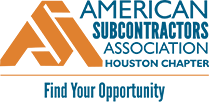By Lee Hart, President, Safety by Design, Inc.
Generally, high-visibility shirts, both long sleeve and short, are accepted in lieu of safety vets when working inside of buildings. However, in some cases (as indicated below) employees may need a Class 1, 2 or 3 vest on job sites. When in doubt, ask the general contractor for guidance.
Class 1 Safety Vests
Class 1 vests are for those working in low-impact areas. According to OSHA, this includes areas where traffic flow does not exceed 25 mph. Workers should also be stationed a good distance away from the traffic to prevent injury. Class 1 vests are typically used by parking attendants, delivery drivers, and roadside assistance personnel in low traffic areas.
All class 1 vests should have a minimum of 155 square inches of reflective tape. Dimensions of the reflective tape can be either 6.46 linear feet of 2-inch tape or 9.39 linear feet of 1 3/8-inch tape. The reflective stripes should be around the middle in a 360º stripe and above each shoulder. These vests should also have a bright yellow or orange color.
Class 2 Safety Vests
Those working near heavier traffic and in low visibility areas will need to wear class 2 safety vests. The weather may reduce visibility in these areas and traffic flow may exceed 25 mph. Workers should still be stationed a good distance away from the traffic. Class 2 vests are typically worn by airport workers, high-volume parking or toll booth operators, and forest workers.
Class 2 vests must have a minimum of 201 square inches of reflective tape. Dimensions of the reflective tape can be 8.373 linear feet of 2-inch tape or 12.2 linear feet of 1 3/8-inch tape. Reflective stripes should be over the shoulders and around the middle in either one or two 360º horizontal stripes.
Class 3 Safety Vests
Class 3 vests are reserved for those that are close to high-traffic areas, including site inspectors, emergency responders, railway workers, and utility crews. Traffic in these areas may be close to or exceed 50 mph. Workers typically work right next to the road or in other hazardous areas, so they should be as visible as possible to prevent injury.
These vests must have a minimum of 310 square inches of reflective tape that is 12.92 linear feet and 2-inches wide. This includes a requirement that the worker have a full silhouette outline. Headlights approaching a worker should make plain that this is a person. This means reflective materials on the arms and legs, which far exceeds the standards for Class 1 and Class 2 safety vests.
##
For more information, Lee Hart can be reached at lhart@safetybydesigninc.com or 832-266-0114.

